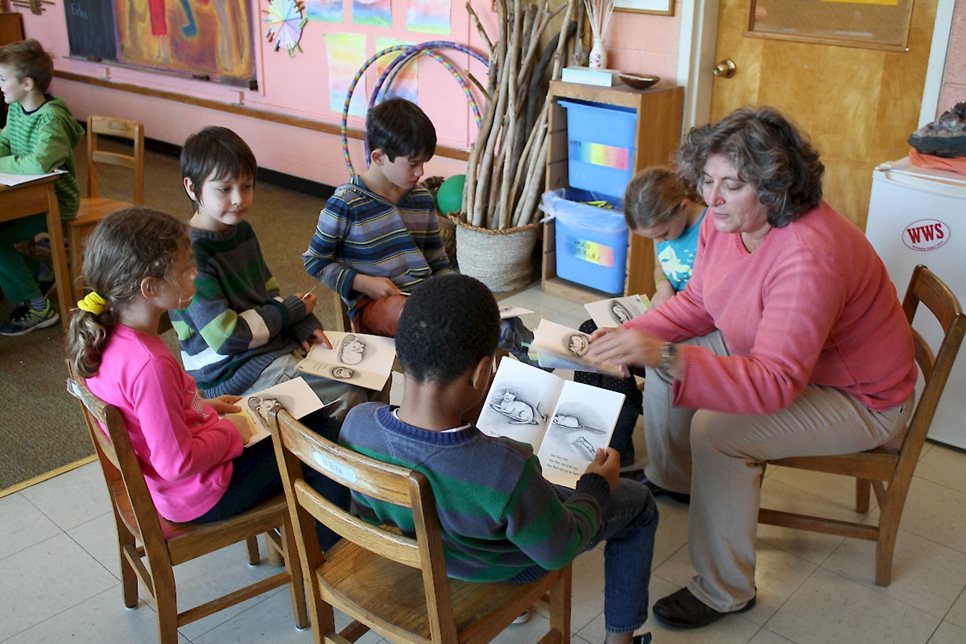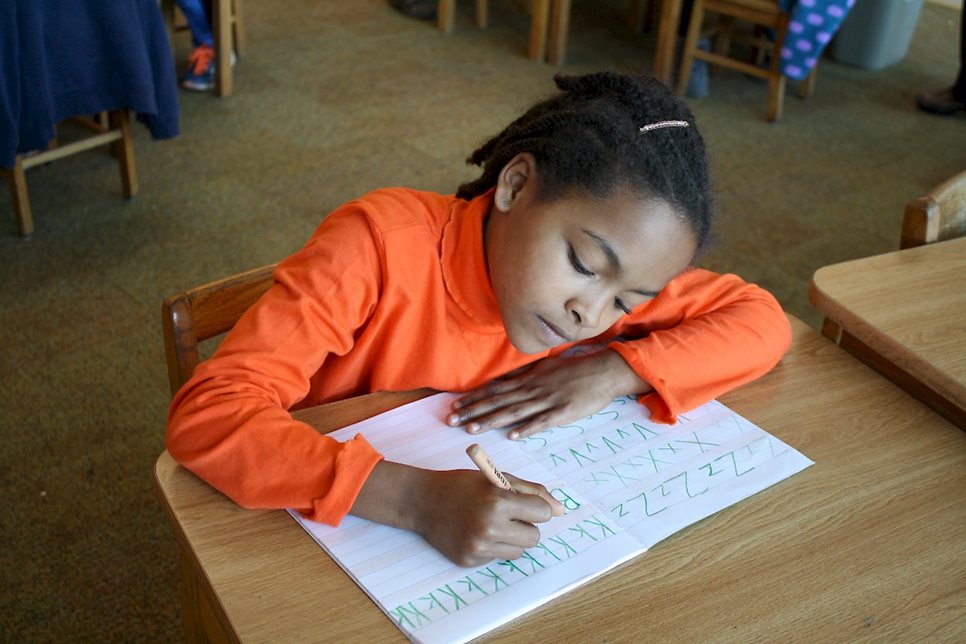Report Supports Age-Appropriate Reading Instruction
Sooner isn’t always better.
Efforts to teach reading in kindergarten are not only misplaced but also potentially harmful: That’s the conclusion of a report from the Alliance for Childhood and Defending the Early Years, two organizations focused on early childhood learning. The 2015 report and accompanying video raise child development considerations that already are central to the ways that the Washington Waldorf School — and all Waldorf schools — teach reading and literacy.
Many children are not developmentally ready to read in kindergarten, the report noted, and no research shows long-term gains from forcing them to do so. Yet the trend, reinforced and escalated by the Common Core State Standards, has been to push kindergarten instruction in that direction. Those standards call for children to be able to read “with purpose and understanding” before entering first grade.
“We are setting unrealistic reading goals and frequently using inappropriate methods to accomplish them,” Nancy Carlsson-Paige, Geralyn Bywater McLaughlin, and Joan Wolfsheimer Almon wrote in their report. They also found that academic instruction for reading has displaced time for play and other free-choice activities that have a proven educational benefit.
In play-based kindergartens, they noted, teachers intentionally design language and literary experiences that help prepare children to become fluent readers. These include activities such as telling stories, singing songs, and reciting poems — the approach we take at Washington Waldorf.


The report cites recommendations from the Bank Street College of Education and other experts for a slow but solid start for literacy development in preschool and kindergarten to create a foundation for a lifelong process of language development and reading. Bank Street’s handbook for reading tutors describes most children in preschool, kindergarten, and even first grade as “emergent readers” and first- and second-graders as “early readers,” and offers guidance on instruction tailored accordingly.
Dr. Susan Johnson, a behavioral and developmental pediatrician for more than two decades, has expressed her concern that “our current educational system is teaching children to read in a way that does not make sense developmentally.” The posting on her website (You and Your Child’s Health) explains, in detail, how reading instruction is often out of sync with the development of a child’s brain and body.
Two studies by education researcher Sebastian Suggate, published in 2009 and 2013, concluded that teaching children to read beginning at age 5 is not likely to make them any more successful at reading in the long term than teaching them from age 7.
The first study included a re-analysis of reading assessment data for 15-year-old students in 54 countries. The second — using select groups of students in New Zealand — found that any differences in reading fluency between students who began reading at age 5 and age 7 disappeared by age 11. But there was one notable difference at age 11: The students who began receiving reading instruction at age 7 generally had greater reading comprehension.
Based on his research, Suggate said that “language development is, in many cases, a better predictor of later reading than early learning is.”
These findings are not surprising to Waldorf educators, who have always placed a great emphasis on recognizing the stages of children’s development and how each stage relates to how they should be taught. As Barbara Sokolov, who has taught at both Waldorf and public schools, wrote in 2000:
“Working with a real knowledge of the developing child, Waldorf teachers begin teaching reading by cultivating children’s sense of language and their inner capacities to form mental images. Vivid verbal pictures and the use of rich language are constantly employed in the classroom. Difficult vocabulary and complex sentence structure are not held back in the telling of tales. Children sing and recite a vast treasury of songs and poems that many learn by heart. Children live into the world of imaginative inner pictures, totally unaware that they are developing the most important capacities needed for reading comprehension, for reading with understanding.”
SEE THE WALDORF APPROACH IN ACTION.